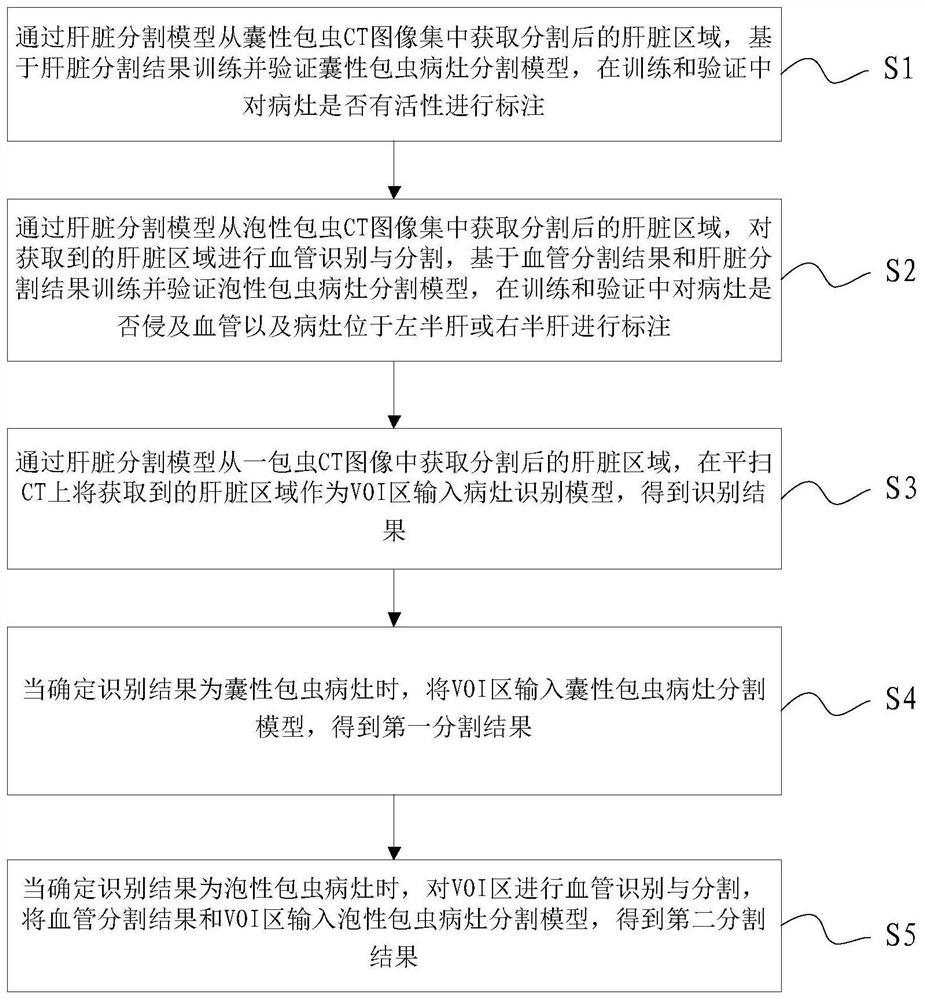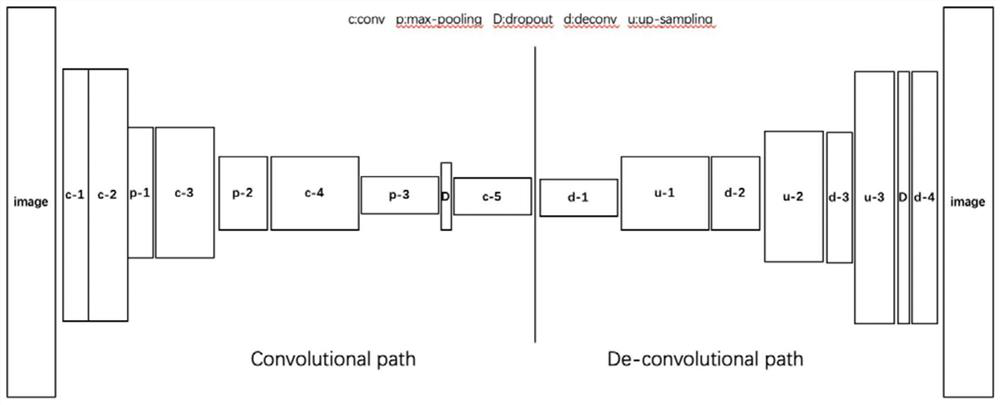A Neural Network-Based Segmentation Method and System for Hepatic Hydatid Lesions
A neural network and convolutional neural network technology, applied in the field of liver hydatid detection, can solve problems such as poor results, reduce missed diagnosis, and improve diagnostic efficiency and accuracy.
- Summary
- Abstract
- Description
- Claims
- Application Information
AI Technical Summary
Problems solved by technology
Method used
Image
Examples
Embodiment Construction
[0050] The present invention will be further described in detail below in conjunction with the accompanying drawings and specific embodiments.
[0051] Such as figure 1 As shown, a neural network-based segmentation method for liver hydatid lesions, including:
[0052] S1. Obtain the segmented liver region from the cystic hydatid CT image set through the liver segmentation model, train and verify the cystic hydatid lesion segmentation model based on the liver segmentation results, and mark whether the lesion is active during training and verification;
[0053] S2. Obtain the segmented liver region from the CT image set of alveolar echinococcosis through the liver segmentation model, identify and segment the blood vessels of the acquired liver region, train and verify the segmentation of alveolar echinococcosis lesion based on the results of blood vessel segmentation and liver segmentation Model, during training and verification, mark whether the lesion invades blood vessels an...
PUM
 Login to View More
Login to View More Abstract
Description
Claims
Application Information
 Login to View More
Login to View More - R&D
- Intellectual Property
- Life Sciences
- Materials
- Tech Scout
- Unparalleled Data Quality
- Higher Quality Content
- 60% Fewer Hallucinations
Browse by: Latest US Patents, China's latest patents, Technical Efficacy Thesaurus, Application Domain, Technology Topic, Popular Technical Reports.
© 2025 PatSnap. All rights reserved.Legal|Privacy policy|Modern Slavery Act Transparency Statement|Sitemap|About US| Contact US: help@patsnap.com



